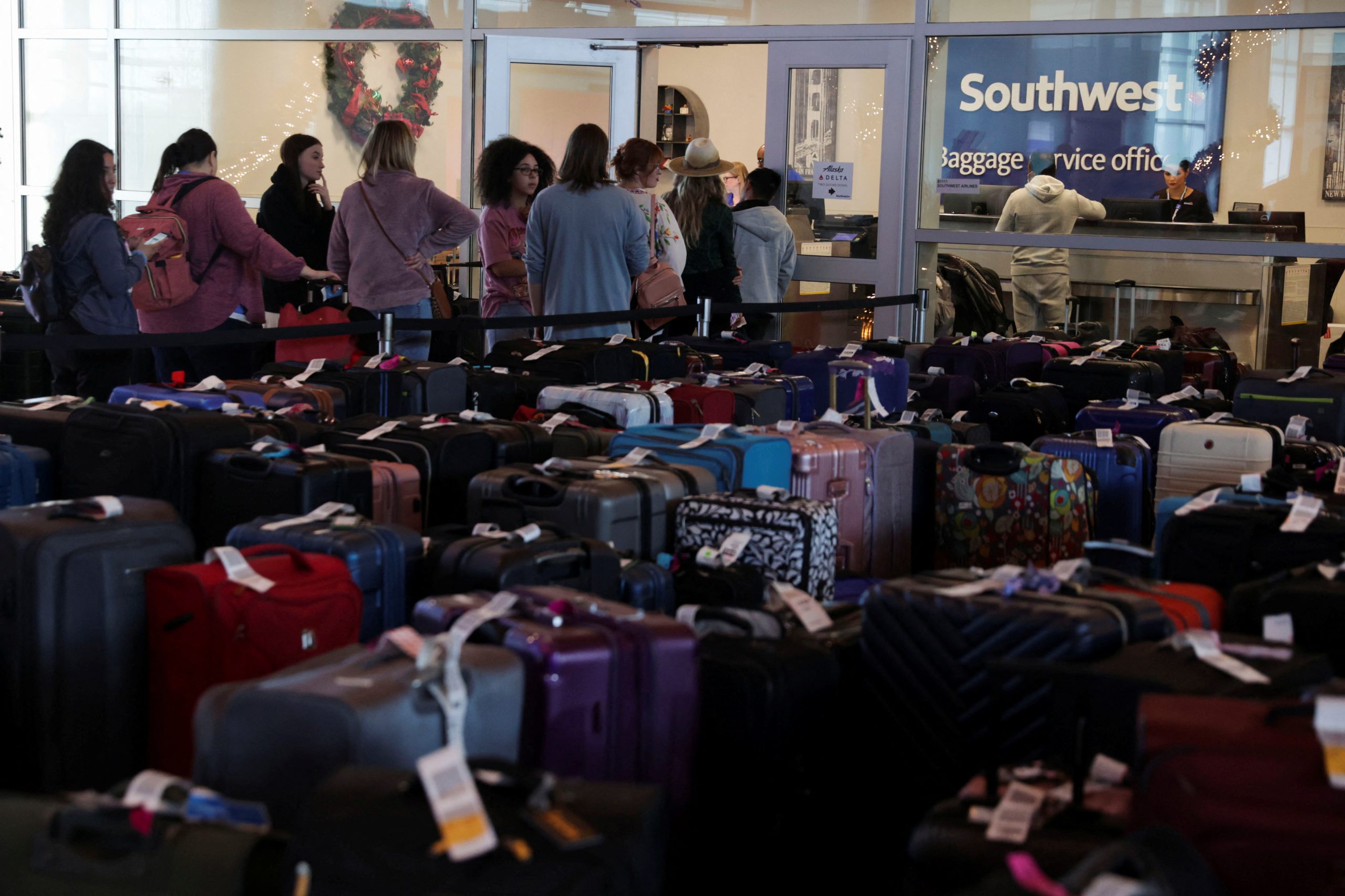
[elfsight_social_share_buttons id=”1″]
Southwest Airlines Co. said it plans to return to normal operations on Friday after days of running at a third of its usual capacity due to disruptions triggered by a massive winter storm that swept much of the United States around the Christmas holiday.
The storm forced U.S. airlines to cancel thousands of flights around the holiday weekend, but Southwest’s problems deepened while other airlines largely recovered.
On Thursday, the airline had 2,357 canceled flights, or 58%, far more than other carriers, according to airline data tracker FlightAware.
Southwest plans to return to normal flight schedules on Friday, the airline said in a statement, adding it was eager to get back to normal ahead of the New Year holiday weekend.
The carrier has canceled more than 16,000 flights since last Friday and U.S. Transport Secretary Pete Buttigieg said on Wednesday that Southwest’s difficulties had gone beyond being a weather-driven issue and indicated a “system failure”.
Employee unions say they warned management at Southwest for years that its technology systems badly needed upgrades.
Flight attendants have been complaining about technological failures at the airline for years, according to Lyn Montgomery, president of the Southwest Airlines Flight Attendants Union, a local 556 of the Transport Workers Union.
The union leadership has raised the issue repeatedly, including in contract negotiations since 2018, she said. On a Sept. 27 picket line, she added, one sign read, “Picket line loading, Southwest Airlines technology failure.”
“There’s many ways it could have been avoided,” Montgomery said on Thursday on CNN, including commitments by Southwest executives to ensure that IT infrastructure would be able to meet the company’s growth.
The comments echoed those of the Southwest Airlines Pilots Association, which said leadership had failed to adapt operations to address repeated systems failures, despite years of calls for improvements by the union.
“The holiday meltdown has been blamed on weather that had been forecast five days prior, but this problem began many years ago, when the complexity of our network outgrew its ability to withstand meteorological and technological disruptions,” it said in a statement on Wednesday.
Improvements it called for included changes to crew scheduling software and communication tools that would have allowed displaced crews to remain in contact with the company.
Company officials acknowledged that current problems stem, in part, from an inability of internal logistics and scheduling systems to recover after widespread storm disruptions.
“We have much work ahead of us, including investing in new solutions to manage wide-scale disruptions,” Southwest said on Thursday.
Top executives apologized to customers this week and promised to address the issues that led to the disruptions.
Ryan Green, the airline’s chief commercial officer, said in a statement that “all the flexibility and planning that we put in place to deal with the storm just wasn’t enough.”
Southwest CEO Bob Jordan said the company needs to “double down on our already existing plans to upgrade systems for these extreme circumstances so that we never again face what’s happening right now.”
A Dec. 21 internal company memo pointed out a worker shortage in Denver, where Southwest has significant operations and which was hit hard by the winter storm, the Washington Post reported.
The U.S. Transportation Department is investigating the large number of canceled and delayed Southwest flights in recent days to determine if they were in the airline’s control.
Copyright 2022 Thomson/Reuters
